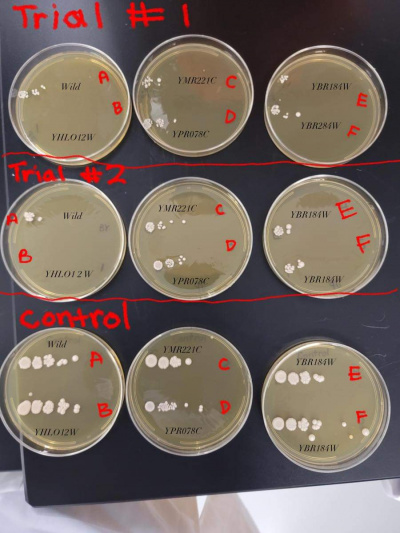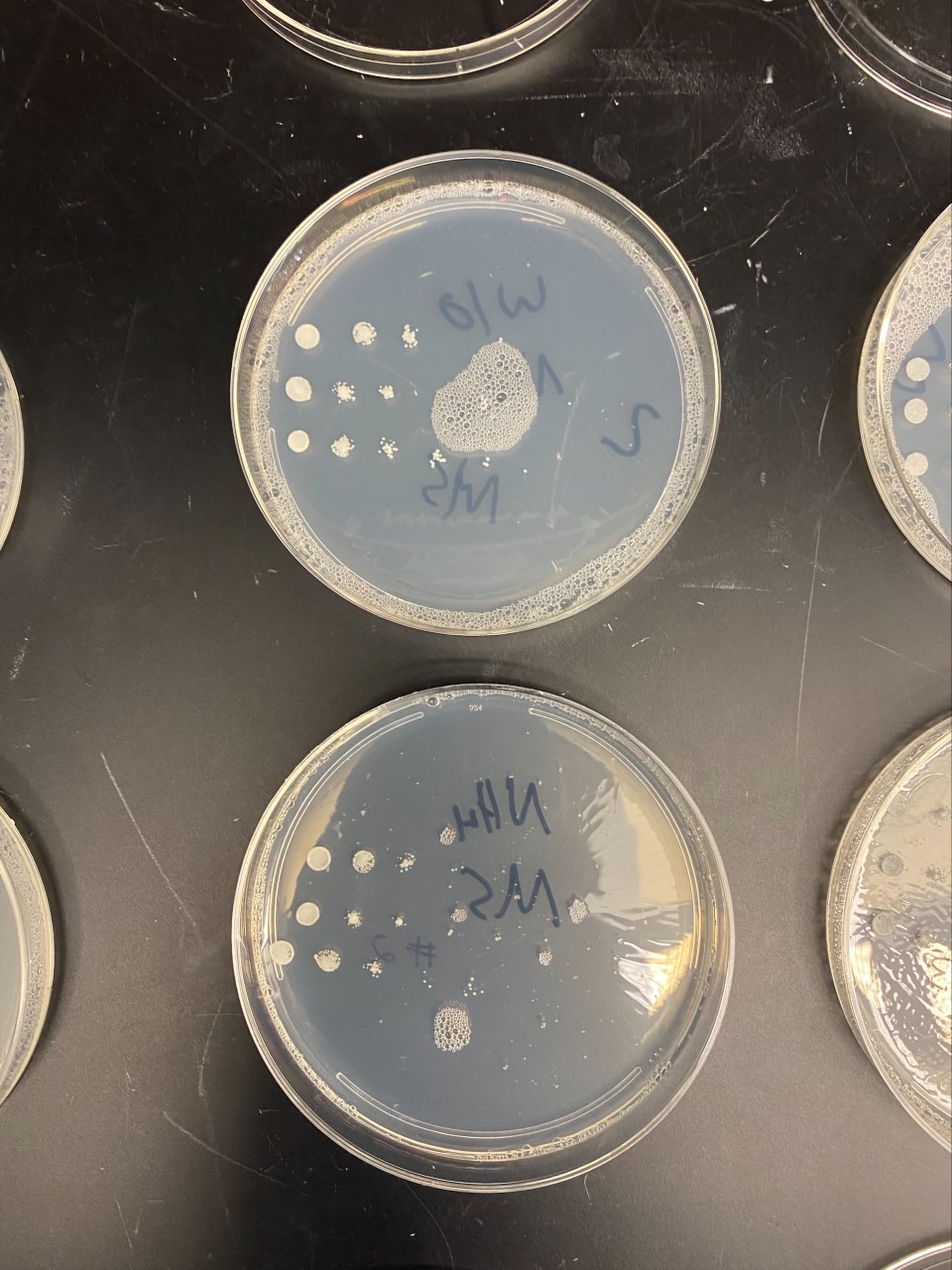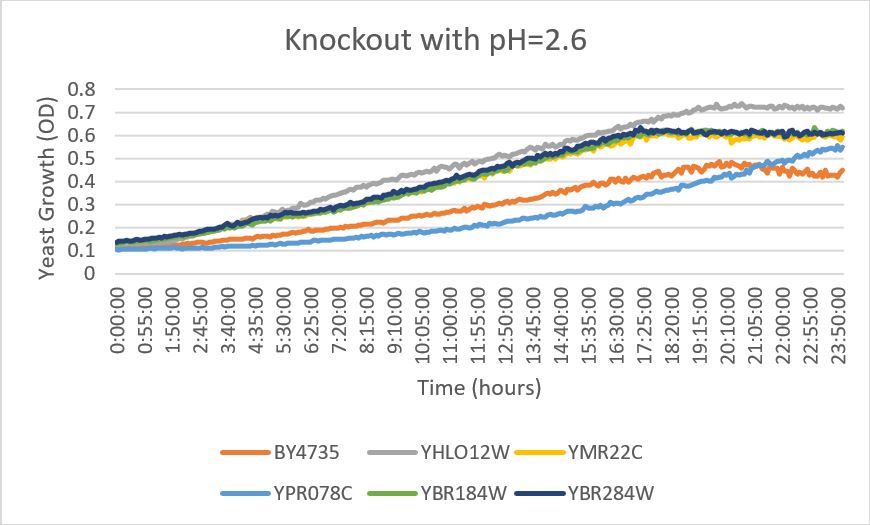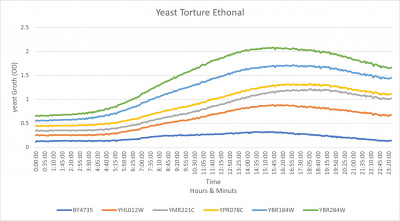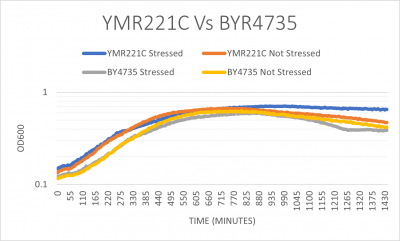Difference between revisions of "YMR221C"
| Line 76: | Line 76: | ||
The YMR221C yeast strain doubling time without any stress was 172 minutes which is very similar to the wild type with 182 minutes. When both strains were stressed by G418 they YMR221C doubling time was 184 minutes and the wild type was 178 minutes. (These times are averaged between three trials) | The YMR221C yeast strain doubling time without any stress was 172 minutes which is very similar to the wild type with 182 minutes. When both strains were stressed by G418 they YMR221C doubling time was 184 minutes and the wild type was 178 minutes. (These times are averaged between three trials) | ||
Protocol: [[https://wiki.yeastgenome.org/index.php/UW-Stout/G418_FA21]] | Protocol: [[https://wiki.yeastgenome.org/index.php/UW-Stout/G418_FA21]] | ||
| + | |||
Revision as of 13:38, 21 December 2021
Share your knowledge...Edit this entry! <protect>
| Systematic name | YMR221C |
| Gene name | |
| Aliases | |
| Feature type | ORF, Uncharacterized |
| Coordinates | Chr XIII:715445..713931 |
| Primary SGDID | S000004834 |
Description of YMR221C: Putative protein of unknown function; the authentic, non-tagged protein is detected in highly purified mitochondria in high-throughput studies; physical interaction with Atg27p suggests a possible role in autophagy[1][2]
</protect>
Contents
Community Commentary
About Community Commentary. Please share your knowledge!
This gene is part of the UW-Stout Orphan Gene Project. Learn more here.
UW-Stout/Heat Shock FA21
YMR221C (C)
- When stressing this strain of yeast, there was not much of a growth difference. The growth rate slowed down once heat shocked.
Nitrogen Starvation
- In the YMR221C gene, it seems that there is no significant difference between the two. If we are really taking a detailed look at it, it does seem that the plate without Ammonium is growing better. We conclude that the gene does not react with this strain.
UW-Stout/Bud Scars FA21
Cells grown with this gene (YMR221C) knocked out had an average of 1.36 bud scars per cell while the wild type (BY-RY4735) had 0.85 bud scars per cell. Of 119 YMR221C cells counted, 161 bud scars were seen. This indicated that the YMR221C gene slows reproduction rate and thus bud scarring in yeast cells.
pH
YMR221C
- When this strain was exposed to a citric acid buffer with a pH of 2.6, there did not appear to be a significant change in the growth rate of the strain
UW-Stout/Ethanol FA21
- The Yeast Strain of YMR221C was affected by the 18.5 % Ethanol but there was still a defined growth curve
Protocol: [[1]]
UW-Stout/G418 FA21
The YMR221C yeast strain doubling time without any stress was 172 minutes which is very similar to the wild type with 182 minutes. When both strains were stressed by G418 they YMR221C doubling time was 184 minutes and the wild type was 178 minutes. (These times are averaged between three trials) Protocol: [[2]]
UW-Stout/Copper FA21
<protect>
References
See Help:References on how to add references
- ↑ Reinders J, et al. (2006) Toward the complete yeast mitochondrial proteome: multidimensional separation techniques for mitochondrial proteomics. J Proteome Res 5(7):1543-54 SGD PMID 16823961
- ↑ Tarassov K, et al. (2008) An in vivo map of the yeast protein interactome. Science 320(5882):1465-70 SGD PMID 18467557
See Help:Categories on how to add the wiki page for this gene to a Category </protect>
